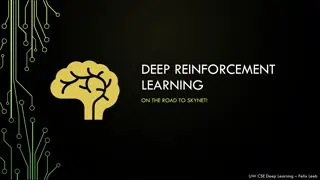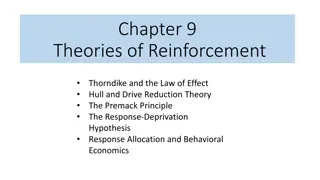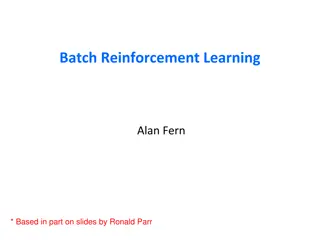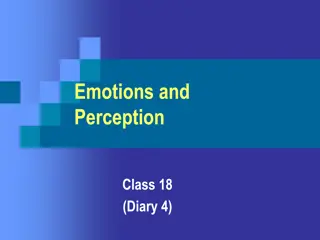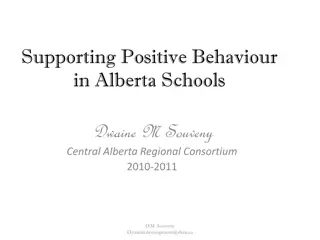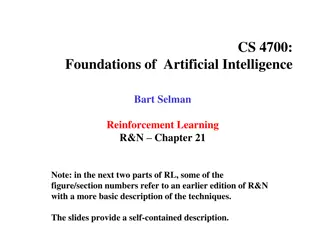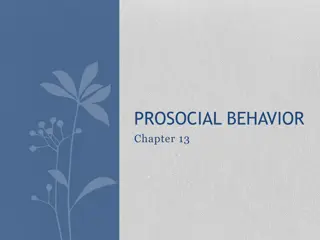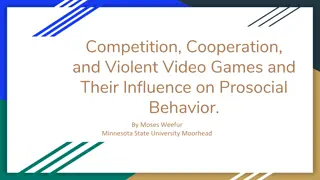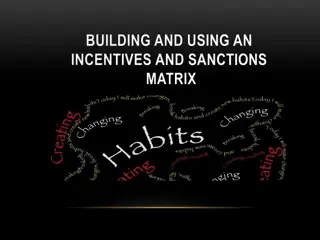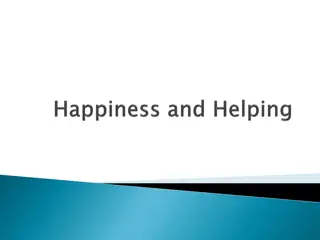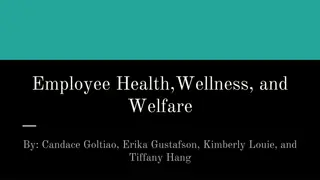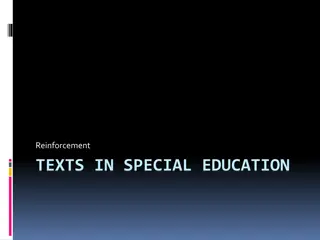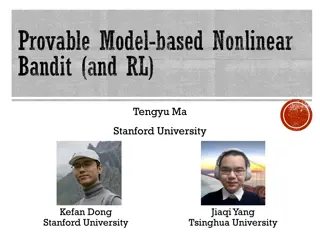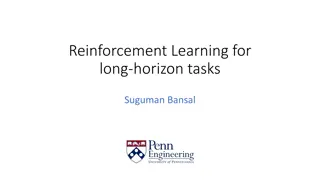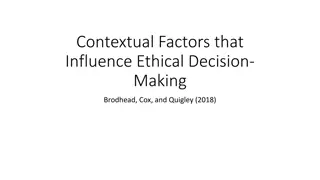Learning Prosocial Behavior: Importance of Modeling and Reinforcement
A perspective on prosocial behavior emphasizing learning norms of helping in children through observation and reinforcement. Studies show how rewards and punishments influence sharing and helping behaviors, demonstrating the impact of modeling charitable actions on altruistic behaviors in individuals.
Download Presentation

Please find below an Image/Link to download the presentation.
The content on the website is provided AS IS for your information and personal use only. It may not be sold, licensed, or shared on other websites without obtaining consent from the author.If you encounter any issues during the download, it is possible that the publisher has removed the file from their server.
You are allowed to download the files provided on this website for personal or commercial use, subject to the condition that they are used lawfully. All files are the property of their respective owners.
The content on the website is provided AS IS for your information and personal use only. It may not be sold, licensed, or shared on other websites without obtaining consent from the author.
E N D
Presentation Transcript
Specialized Psychological Texts Frist year Seconded semester Selected by Prof .Dr. NEAMA A.K.AHMED
A second perspective on prosocial behavior emphasizes the importance of learning. In growing up, children learn their society's norms about helping. At home, at school, and in the community, adults teach children that they should help other people. You can probably remember times when you were praised for being helpful, or chided for forgetting to help when you should have. Two general learning principles discussed in earlier chapters are again important here
People learn to help through reinforcement, the effects of rewards and punishment-for helping, and modeling, observing others who help. Studies show clearly that children will help and share more when they are rewarded for their prosocial behavior. For example, 4- year-olds were more likely to share marbles with another child when they were rewarded with bubblegum for their generosity (Fischer, 1963).
A study of sixth-grade girls (Midlarsk, Bryan, & Brickman, 1973) showed the impact of seeing a helpful model. Girls played a special pinball machine to win chips that could be exchanged for candy and toys. Before her own turn came, each girl watched an adult model play the game. In one condition, a selfish model put all the chips she won into a jar labeled "my money." In another condition, a charitable model put some of her chips into a jar labeled "money for poor children."
Regardless of condition, the model then urged the girl to think about the poor children who would "love to receive the prizes these chips can buy." Results showed a clear effect of modeling. Girls who had seen a charitable model donated an average of 19 tokens to the poor, compared to only 10 tokens given by girls who saw the selfish model.
Another study (Rushton & Teachrnan, 1978) combined both reinforcement. First, a helpful adult model was used to get boys to behave altruistically by giving some of the tokens they won at bowling to an orphan named Bobby. Then the model rewarded the child for generosity ("Good for you" "That's really nice of you") or punished him (That's kind of silly for you to give to Bobby."). modeling and
There was also a no-reinforcement condition in which the adult said nothing. Children who were rewarded gave more to Bobby on later trials than did children who were punished. Two weeks later, when children again played the same game and were reminded about Bobby, the effects of the earlier reward or punishment still influenced how much they gave to Bobby.
Modeling is also a strong promoter of prosocial behavior in adults, as a study of adult blood donors clearly showed. In this clever experiment (Rushton & Campbell, 1977), female college students first talked to a friendly woman (actually a confederate of the researchers) as part of a study of social interaction. The researchers arranged things so that as the two women left the interaction study, they passed a table set up in the corridor, staffed by people asking for blood donations.
Half volunteered, another condition, the confederate stepped aside to talk to someone else. The effects of the model's behavior were striking. A helpful model led 67 percent of subjects to pledge to donate blood, compared to only 25 percent of subjects who saw no model. More impressive were data on whether the women actually followed through on their pledges to give blood the time, modeling the confederate prosocial immediately behavior. In
None of the women in the no-model condition actually gave blood, but 33 percent of those who saw the altruistic model did. Similar evidence of modeling effects has been found in a variety of situations, such as donating money to a Salvation Army kettle at Christmas or helping a stranded motorist fix a fiat tire (Bryan & Test, 1567). Experiments have also shown that adult helping is influenced by reinforcement. In one study (Moss & Page, 1972), individuals walking along the main street in Dayton, Ohio, were approached by an attractive woman who asked how to get to a local department store.
After getting instructions, she either rewarded the helper (by saying, "Thank you very much, I really appreciate this") or punished the helper ("I can't understand what you're saying, never mind, I'll ask someone else"). When the na ve subject continued walking down the street, he or she encountered another woman who accidentally dropped a small bag and continued walking as if she didn't know she had lost it. The question of interest was whether the subject would help the woman by returning the bag to her. In the reward condition, 90 percent of people helped; in the punishment condition, only 40 percent helped.
Taken together, these and other studies provide convincing evidence of the power of reinforcement and modeling to shape prosocial behavior. Over time, people learn norms about who they should help when, and develop habits of helping. The childhood origins of prosocial behavior depend largely on external rewards and social approval. For adults, helping can become an internalized value, not dependent on external supports. It can be enough to know that you've lived up to your own standards and to feel the warm glow of having done a good deed.


